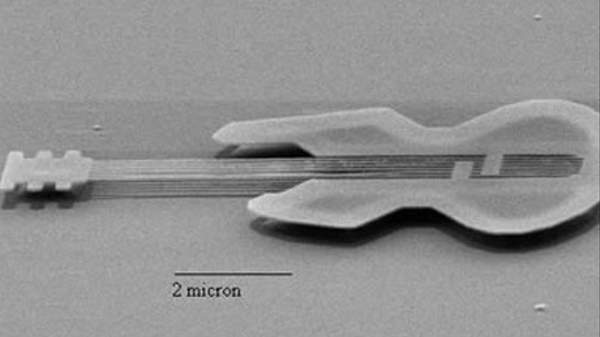Overview
The cliche saying that the greatest things come in the smallest packages isn't always proven true, but it seems to be the case for a new musical development in nanotechnology, the Nano Guitar. Researchers at Cornell University, Dustin W Carr and Professor Harold G Craighead launched the project in order to show skeptics how advanced and precise (and cool) nanotechnology is.
The microscopic instrument is made of crystalline silicon and is 10,000 nanometres long, which is about the size of a single human red blood cell or one-twentieth the size of the width of a strand of hair. Can it be played like a full-sized guitar? Well, its six strings are each only 100 atoms wide, so tiny that they can only be plucked by sending miniature lasers through an atomic force microscope to produce one of the highest pitches to ever be recorded. The sound is a 40 megahertz signal 130,000 times higher than that of a regular guitar, unable to be picked up by the even most sensitive microphones.
The Nano Guitar has sparked new discoveries in nanotechnology, including a new method of manipulating laser beams to aid in fibre optic communications. Big things do come in small packages.
